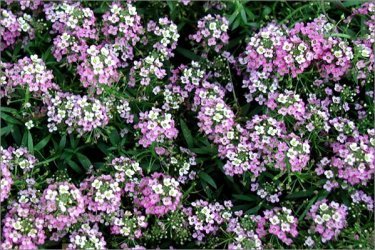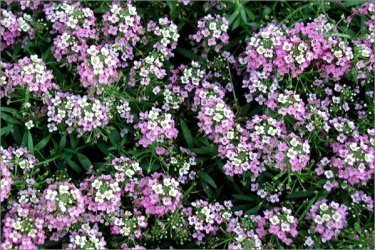Alyssum
Lobularia, or alyssum, is an extremely attractive plant for gardeners. Despite its amazing appearance, it requires a minimum of attention and care.
Its flowering lasts up to one and a half months; its exquisite flowers exude a wonderful honey aroma.
Alyssum, plant description
The bushes are not tall, fluffy due to strong branching, compact.
Even experts do not risk specifying how many varieties of alisum are cultivated today, there are a lot of them, and the number is increasing every year. The difference between varieties is not expressed in terms of changes in the shape or size of the bush, it lies in the color of the flowers.
What is better: buying perennial alyssum or growing annuals from seeds?
There are attractive aspects in growing both types of plants. Perennials bloom earlier, under favorable weather conditions - from mid-April, and delight with flowers for about a month and a half.
Adult lobularia do not produce shoots; propagation is possible either by cuttings or by the same seeds. The method of growing alyssum from seeds is very simple and effective; you can find a description of this process on many forums.
Sowing freshly harvested seeds in moist soil produces rapid mass seedlings.
Next, you just need to thin them out to prevent stretching. Lobularia seedlings are in great demand, and the attention of gardeners to them increases every year.
Perennial bushes will need to be constantly rejuvenated; every year their decorative value decreases. Young bushes bloom a couple of weeks longer and are much more resistant to diseases.
These points should be taken into account when choosing between annuals and perennial varieties.
Growing alyssum: choosing a place to plant
The answer to the question about the soil and place of growth will please flower growers; lobularia is unpretentious and will feel good in any area and in any soil.
To get long and lush flowering It is advisable to choose slightly acidic and neutral soils.
You should only avoid wetlands; the bushes will simply get wet.
Enhanced flowering will be observed in areas well lit by the sun; in the shade, the process of bud formation will be weak.
Rules of care
They are not complicated at all:
- fluffing up the soil or mulching it;
- destruction of weeds;
- timely watering, which is carried out as the soil dries.
At the end of flowering, all flower stalks should be removed so that the perennial plant does not lose strength to form seeds. A month after this procedure, the bushes can be pruned.
Frost resistance of alyssum
Even if a variety is positioned as frost-resistant, you should not expect that the plants will withstand any sub-zero temperatures.
For example, for rock varieties, a decrease in temperature to -15 C is critical; in open ground conditions, without shelter, even such a frost will be destructive for them.
Annual varieties can be grown in pots or containers, in flower beds or alpine slides. Ampelous alyssum can be used as a plant for pots, it will serve as an excellent decoration for a patio or balcony.



